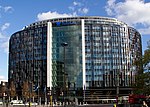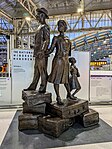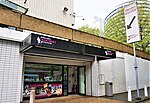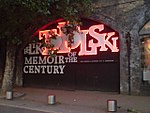Leake Street

Leake Street (also known as the Banksy Tunnel) is a road tunnel in Lambeth, London where graffiti is tolerated regardless of the fact that it is against the law. The street is about 300 metres long, runs off York Road and under the platforms and tracks of Waterloo station. The walls are decorated with graffiti, initially created during the Cans Festival organised by Banksy on 3–5 May 2008. The festival ran again on the August Bank Holiday weekend 2008.While the Eurostar terminal was at Waterloo, the road was open for through vehicular traffic. On 14 November 2008 ownership of the road passed from Eurostar to Network Rail and through traffic was restricted to pedestrians. Prior to the 1920s the street was known as York Street.
Excerpt from the Wikipedia article Leake Street (License: CC BY-SA 3.0, Authors, Images).Leake Street
Leake Street, London Lambeth (London Borough of Lambeth)
Geographical coordinates (GPS) Address Nearby Places Show on map
Geographical coordinates (GPS)
| Latitude | Longitude |
|---|---|
| N 51.502 ° | E -0.1157 ° |
Address
Prospect
Leake Street
SE1 7PN London, Lambeth (London Borough of Lambeth)
England, United Kingdom
Open on Google Maps










